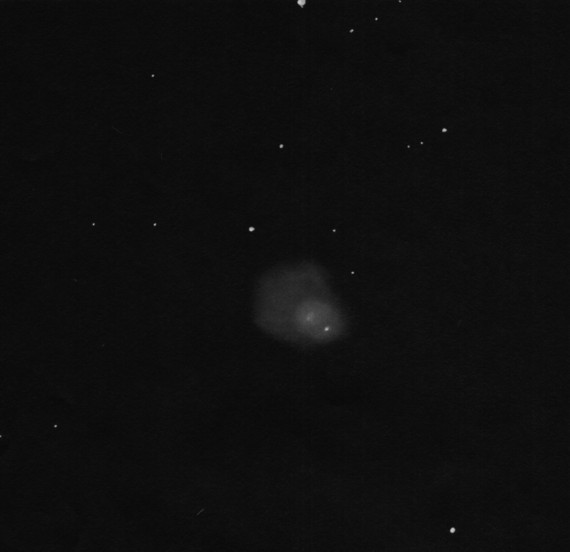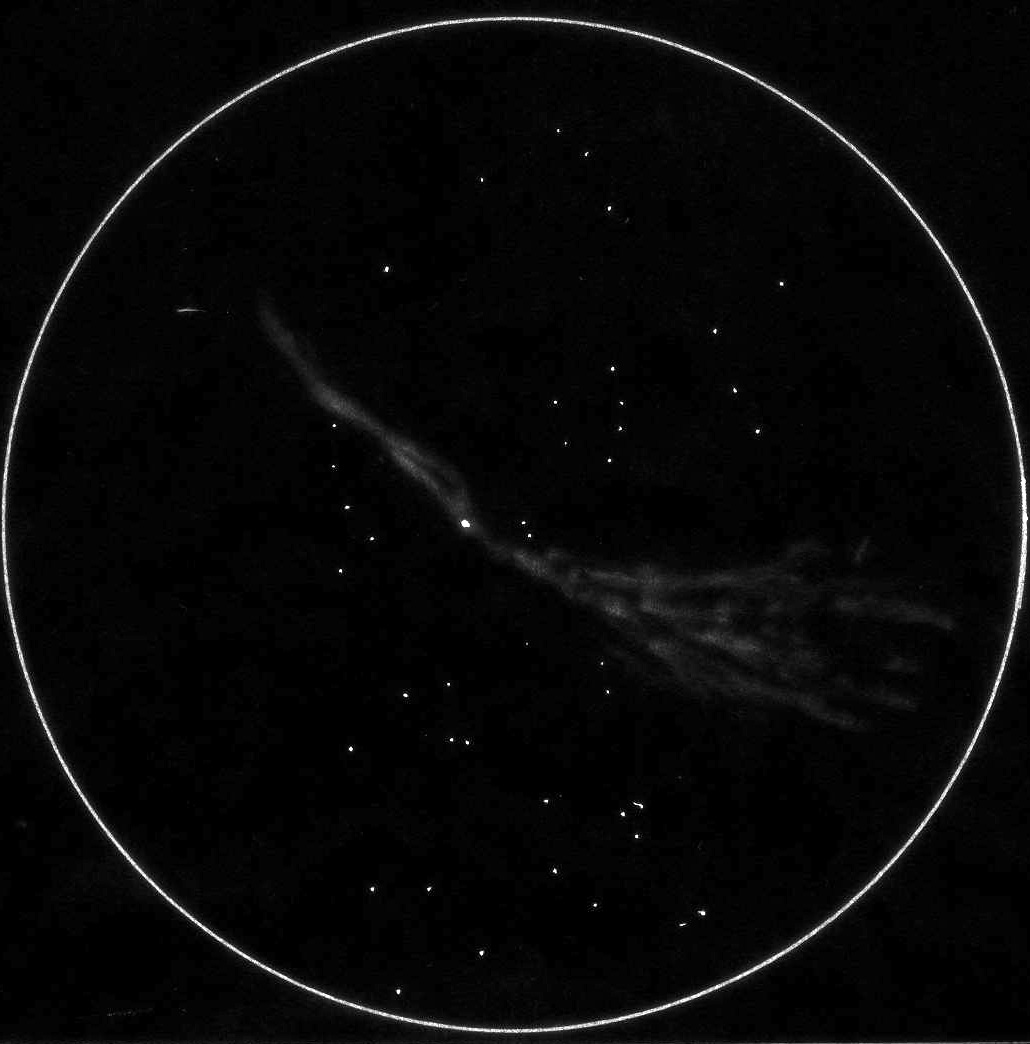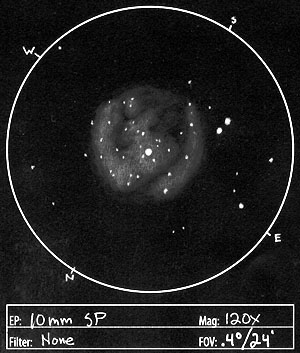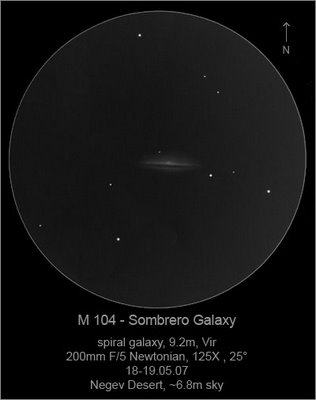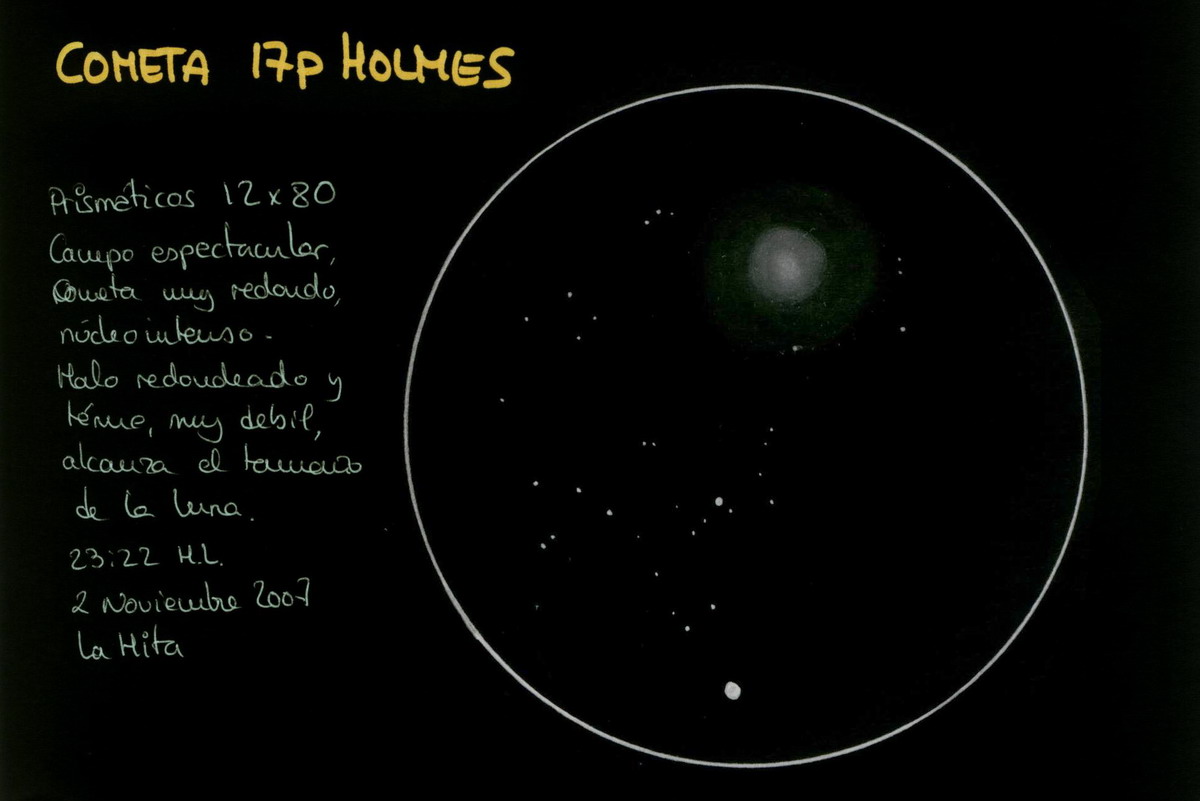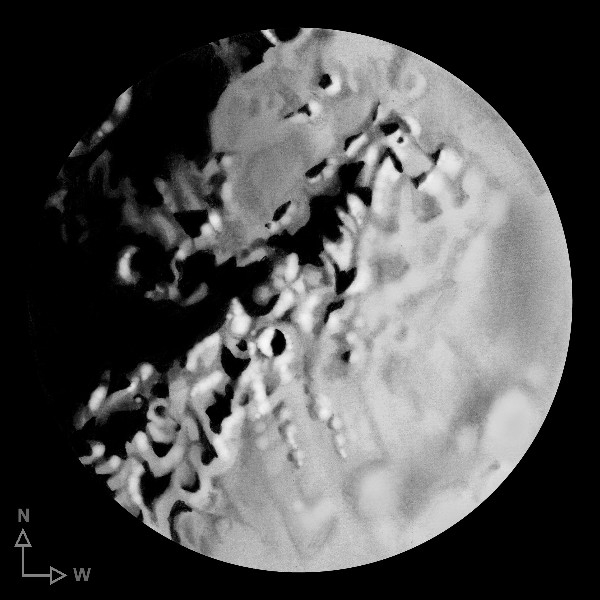
The Montes Apenninus
By Eric Graff
Lunar Mountain Range
Parks Astrolight EQ6 * 6″ f/6 Newtonian Reflector
6mm Parks Kellner + 4x Barlow * 600x, ~4′ Field of View
19 October 2007 * 01:35-03:50 UT
The largest lunar mountain range; the majestic Montes Apenninus extend 600
kilometers around the south preceding (sp) rim of Mare Imbrium. The highest peaks
exceed 5000 meters. The Apollo 15 mission landed at the foot of this range.
This observation shows the north-preceding (np) end of this range extending from the
lunar terminator at the first quarter phase (7-day-old moon). The prominent crater
near the center of the field of view is 22 kilometer-wide Conon, noted for its sharp
rim. Prominent peaks of the range shown here include Mons Ampère (near the sf edge
of the field of view), Mons Huygens (5600 m), Mons Bradley (5000 m, very prominent,
following Conon), an apparently nameless peak north of Conon, and finally Mons
Hadley Delta and Mons Hadley (4500 m) at the np end of the range, which terminates
in Promontorium Fresnel.
An extensive range of foothills precedes the Apennines, while the following side
drops precipitously toward the floor of Mare Imbrium. A series of six small,
elongated hills runs parallel to the following side of the range. Many of the
foothills on the gently-sloping preceding side are arranged in gently curving
parallel chains sweeping southward from the higher slopes, particularly in the area
south of Conon. This “curious” uniformity of orientation is likely the result of
shock fractures induced by the Imbrium asteroid impact.
Deep in shadow, at the nf edge of the field of view are the walls of Archimedes;
Autolycus rests on the northern edge of the field, also heavily shadowed.
